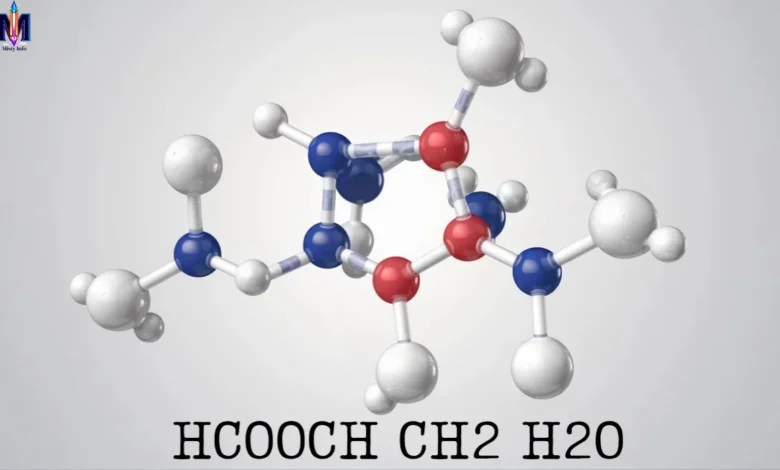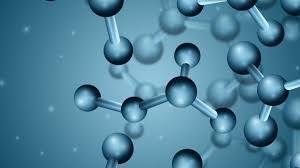Understanding the Chemical Reaction: HCOOH + CH₂ = H₂O — A Deep Dive into Formic Acid, Formaldehyde, and Water

Introduction to the Equation: Decoding HCOOH + CH₂ → H₂O
Hcooch ch2 h2o at first glance, the chemical equation “HCOOH + CH₂ → H₂O” might look like a standard organic chemistry reaction, but there’s more to it than meets the eye. This reaction essentially involves formic acid (HCOOH) and methylene (CH₂) coming together in a process that yields water (H₂O) as one of the products. While it’s not a textbook reaction written in this exact form, exploring the chemistry behind it opens a fascinating window into organic transformations, redox reactions, and the behavior of small organic molecules under different conditions.
To be fair, the representation of CH₂ is a little unconventional here. CH₂ is typically a reactive intermediate (known as methylene), not a stable compound on its own. When it appears in reaction schemes, it usually implies a carbene or some transient state. For practical purposes, this article will walk through how formic acid interacts with formaldehyde (HCHO) or methylene groups in real-world chemistry and how water formation is a likely byproduct in many of these reactions.
Understanding Formic Acid (HCOOH): The Simplest Carboxylic Acid

Let’s start by looking closely at formic acid, a key player in this reaction. Known by its IUPAC name as methanoic acid, formic acid is the simplest carboxylic acid. It’s naturally found in the stings of ants and bees, which is where it gets its name (from the Latin formica, meaning ant).
Formic acid has a straightforward structure: one carbon atom double-bonded to an oxygen atom (a carbonyl group), single-bonded to a hydroxyl group (–OH), and also attached to a hydrogen atom. This structure gives it acidic properties, making it reactive in a variety of organic and inorganic reactions.
What’s fascinating about formic acid is its dual nature—it can act both as a reducing agent and an oxidizing agent. This makes it extremely useful in redox reactions. When heated or catalyzed appropriately, formic acid decomposes to form carbon monoxide (CO) and water (H₂O) or carbon dioxide (CO₂) and hydrogen gas (H₂). This behavior is essential in catalytic hydrogenations and organic synthesis.
In our context, when reacting with CH₂ (or similar molecules), formic acid may participate in dehydration, esterification, or condensation reactions, depending on the conditions and the true identity of CH₂ in the scenario.
CH₂: Methylene or Carbene – A Tricky Little Fragment
Now, what exactly is CH₂? If you’re coming from a general chemistry background, CH₂ might just look like a weird version of methane. But in organic chemistry, CH₂ typically refers to methylene, a divalent carbon species that acts as a carbene—a very reactive intermediate.
Carbenes like CH₂ are known for their high reactivity. They have two valence electrons that are not involved in bonding, which makes them incredibly unstable in isolation. However, they are often generated in situ (in the moment) during reactions where they can immediately interact with other molecules.
For example, in reactions involving formaldehyde (HCHO) or methylene iodide (CH₂I₂) with metals like zinc, methylene groups can be transferred or inserted into molecules. In such cases, water is frequently formed as a byproduct due to condensation or oxidation-reduction processes.
So, when we talk about HCOOH + CH₂ → H₂O, we might be looking at a model representation of a condensation reaction or a simplified way of writing a reaction involving formic acid and formaldehyde, both of which are one-carbon molecules with interesting reactivity.
Water Formation: What Does It Signify in These Reactions?
Water (H₂O) being a product of this reaction is important and gives us clues about the type of chemical process that’s occurring. Generally, the production of water indicates one of several possible reaction mechanisms:
- Condensation Reaction – This occurs when two molecules combine, losing water in the process. A classic example is the formation of an ester or acetal from an alcohol and acid.
- Dehydration Reaction – Here, water is removed from a single compound or between two, often resulting in double bond formation or ring closure.
- Redox Reaction – When hydrogen is removed from one molecule and oxygen is added to another, water is a likely byproduct.
In the reaction HCOOH + CH₂ → H₂O, we can interpret that water is formed due to the oxidation of CH₂ and the reduction of HCOOH. In more accurate scientific terms, it could be a formaldehyde (HCHO) reacting with formic acid under acidic or catalytic conditions to yield various products with water as a side product.
This water formation indicates that bonds are being broken and formed—a hallmark of useful chemical transformations in organic synthesis.
Possible Real-World Interpretations of HCOOH + CH₂ → H₂O
So what does this reaction mean in a real lab or industrial setting?
One possibility is a reaction between formic acid and formaldehyde, where the methylene group comes from the aldehyde. Under acidic conditions, these molecules could engage in hydroxymethylation, forming larger organic compounds and releasing water.
Another interpretation is the generation of water during the decomposition of formic acid in the presence of a CH₂ donor. This is especially plausible in catalytic systems where formic acid is used as a hydrogen donor, like in transfer hydrogenation reactions.
In industrial chemistry, reactions involving formic acid and methylene-like species are part of producing:
- Polyoxymethylene plastics (POM)
- Pharmaceutical intermediates
- Fuels and fuel additives
Formic acid is also widely used in preservatives, leather processing, and even in CO₂ capture and conversion technologies.
Why This Reaction Matters: Applications and Innovations
Even though HCOOH + CH₂ → H₂O is not a standard textbook reaction, its components are deeply embedded in modern chemistry and industry. Understanding the possible interactions of formic acid with methylene units provides insight into:
- Green chemistry innovations: Using formic acid as a hydrogen source instead of molecular hydrogen.
- Organic synthesis: As a mild reducing agent or in forming carbon–carbon bonds.
- Catalysis and energy: In fuel cells where formic acid serves as a liquid fuel releasing CO₂ and H₂O.
In biological systems, formic acid plays a role in metabolic pathways, and derivatives of formaldehyde are involved in protein and DNA interactions, making these small molecules more impactful than they initially seem.
Conclusion: Simplifying the Complex World of Small-Molecule Reactions
The reaction HCOOH + CH₂ → H₂O may appear simple, but it opens the door to a wide spectrum of fascinating chemical behavior. From understanding the reactivity of formic acid and carbenes to grasping the significance of water formation, this equation highlights how even the smallest molecules can tell big stories.
In real-world chemistry, such representations are often shorthand for complex multi-step processes. Whether in organic synthesis, green energy, or pharmaceutical manufacturing, understanding the underlying principles of such reactions can help researchers design more efficient, sustainable, and innovative chemical systems.
So next time you see a simple-looking reaction like this, take a moment to consider what’s happening beneath the surface—you might just uncover the chemistry of the future.



